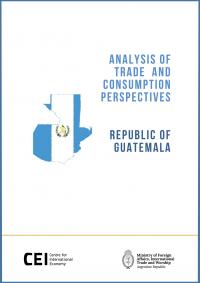Guatemala is the largest economy in Central America, and it ranks among the “upper middle income economies”, due to its GDP per capita. Projections for the country indicate average annual growth above that of Latin America and the Caribbean, but below the rest of Central America.
Food represents the main expenditure of Guatemalan households and the most prominent items are cereals and meats; but the country is in a context of unequal income distribution and consumption patterns heavily influenced by connections with other countries, particularly the United States.
The placement and offer of imported food and groceries are concentrated in a few retail channels, but distribution supply growth is projected for upper-middle and upper-class sectors in the coming years.
Guatemala is positioned as a producer and exporter of food, although it does not achieve self-sufficiency in some basic products of the local diet. To increase productivity and reduce losses, the country will need to import modern technology for agricultural and livestock production.
In relation to bilateral trade, in 2023 Argentine exports of goods and services to Guatemala increased, as did imports. In the last 24 years, the result of the bilateral trade balance of goods recorded a surplus for Argentina.
This report summarises the consumption prospects and the trade opportunities that can be explored in the Guatemalan market and adds to the series of studies for markets published by the CEI.

